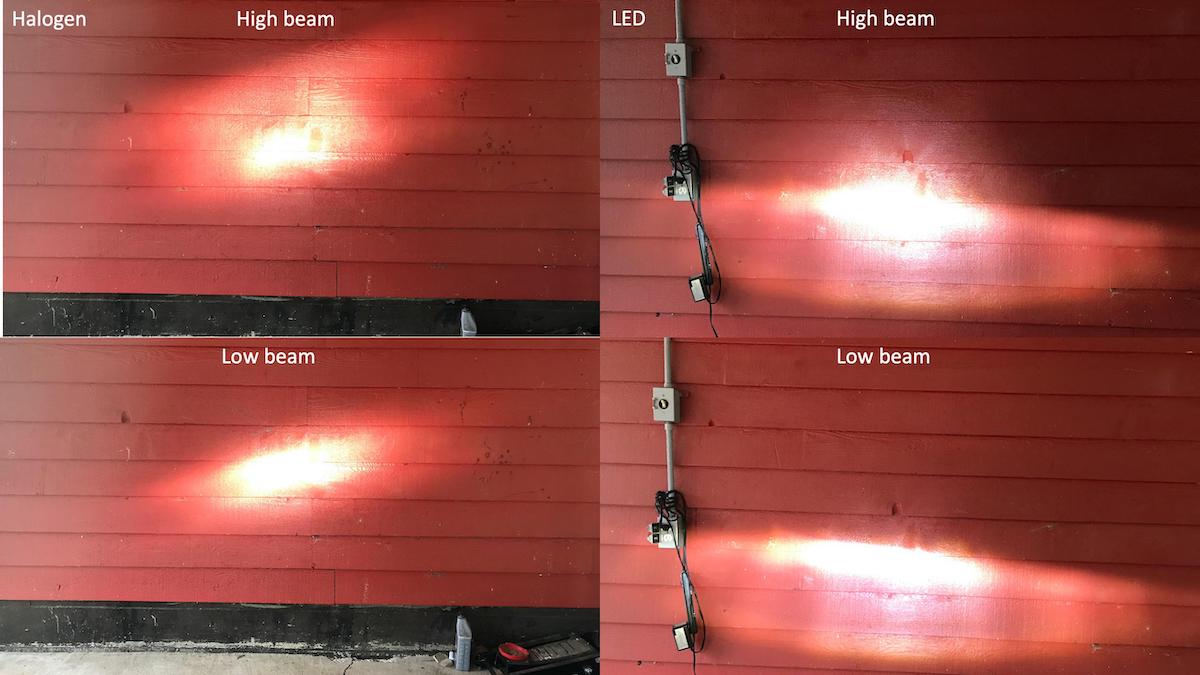It all started when one man came up with an invention that changed the course of human history once again. We are talking about Thomas Edison and his incandescent bulb design that laid the foundation of modern-day bulbs.
To better look at the history of light bulbs, we will address a commonly asked question today.
What is the difference between Halogen and LED light bulbs?
The Beginning of the Battle
It all started when an upgrade was introduced in the traditional incandescent bulbs. For centuries, the incandescent filament bulb was the only variant of light bulbs used throughout the globe. Some countries still use incandescent bulbs more than modern light bulbs.
The halogen bulb was the upgradation of the incandescent bulb where the filament of bulbs was replaced by halogen producing glowing plasma when the charge was passed through it. The LED bulbs were the upgradation of halogen bulbs taking things to the next level.
Power Consumption Comparison
Halogen bulbs are one generation older than LED bulbs. This means that halogens surely fail in many features compared to LED bulbs.
The power consumption of halogen bulbs is much higher than that of LED bulbs. Instead of relying on glowing plasma, LED bulbs produce light through the series connection of Light Emitting Diodes (LEDs), which are way more efficient than halogen bulbs.
How have Halogen Bulbs revolutionized the world of Lighting?
Even if LED bulbs are the pinnacle of light technology in the modern-day world, one can’t simply ignore the importance and impact of halogen bulbs.
Halogen bulbs laid the foundation of the modern-day light sector throughout the globe. These bulbs are still competing with LED bulbs in terms of sales.
The major problem that halogen bulbs solved was the overheating factor which was pretty common in incandescent bulbs.
The filament used to overheat over time, producing a high amount of radiating energy and raising its surrounding temperature. Plus, once the filament breaks down, it cannot be repaired.
Working Model of a Halogen Bulb
The working model of a halogen bulb is quite similar to that of an incandescent bulb. Both bulbs have filaments inside through which charge is passed to attain light. But the working model of a halogen doesn’t solely rely on the glowing filament for light.
The tungsten filament within the bulb is enclosed within an air-tight quartz glass. Within the glass, inert gas like Argon or Nitrogen is pumped.
When the tungsten filament begins to glow, the inert gas attains a state of plasma, producing more luminance than incandescent bulbs.
The Rise of LED bulbs
The reign of halogen light bulbs in the global light sector was quite short. The major reason was that these bulbs used to be categorized as a transition phase for incandescent bulbs.
And this is exactly what happened when more efficient LED bulbs made their debut in the late 20th century.
LED bulbs were a completely new thing in the light bulb sector. No one had ever seen technology like that, so it automatically sparked interest in people from all around the globe. Today, LED bulbs are the most widely used light bulbs throughout the globe.
How LED Bulbs became the next big thing in the world of Lighting
Unlike incandescent and halogen bulbs, LED bulbs took a new approach to producing luminance. A LED is a Light Emitting Diode made from semiconductors.
The semiconductors make the LED work more stable and efficient simultaneously. The LEDs within an LED bulb are connected in a series arrangement.
What’s the benefit of that? The series attachment allows the LEDs to rely on one another to gain current. If a relatively large current value enters the system, the first LED will automatically fuse, saving the rest of them from a similar fate. This makes repairing LED bulbs quite easy.
Which Bulb is Brighter?
Time to get back to the real comparison now. Which one is brighter when we talk about Halogen vs. LED bulbs? The sure-shot answer is that the LED bulb is the brighter one when compared to a halogen bulb.
But why is that, even though the power rating of a halogen bulb is way higher than that of a LED bulb? Well, this proves the efficiency of a LED bulb as well. The LED bulbs rely on illuminating diodes that consume less power than a halogen bulb and produce more light.

Halogen vs. LED: Functionality
Let’s start with the halogen bulbs. Halogen bulbs were introduced as a replacement for traditional incandescent bulbs.
They achieved this target as the halogen bulbs laid the foundation for modern-day LED bulbs. These bulbs were widely used in household and office spaces for light.
On the other hand, LED bulbs are not confined to being used for light in offices and homes alone.
These bulbs are also used as decorative bulbs and lights in spaces all around the globe. LED strip lights are widely used in events like Christmas and Chinese New Year skyrocketing the sales of LED-based lights through the roof.
Making the Final Decision
So, you now know all about LED and halogen bulbs. We have also tried to cover up the whole article so that you can see both sides of the picture. The decision is all yours now. You can either go with a halogen bulb or an LED bulb, which totally depends on your preference.
But we will advise you to choose depending on what you think is best for you and your office/home space. Both bulbs are amazing in their work and serve different purposes.
If we try to summarize it all, is there a difference between Halogen and LED light bulbs? Of course, there is. Does this difference influence someone’s choice of going with one bulb than the other?
Another yes. But regarding what these bulbs have contributed to the light sector, they have equal importance and usage.

